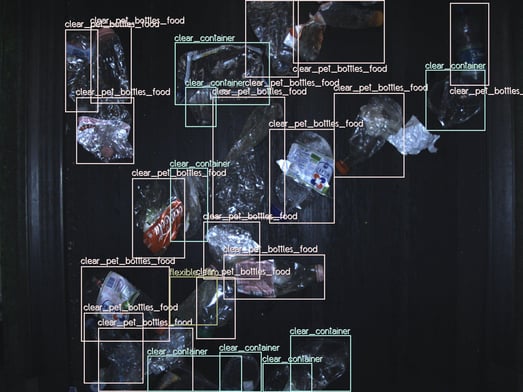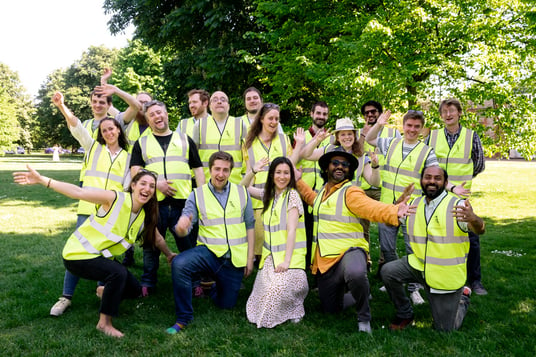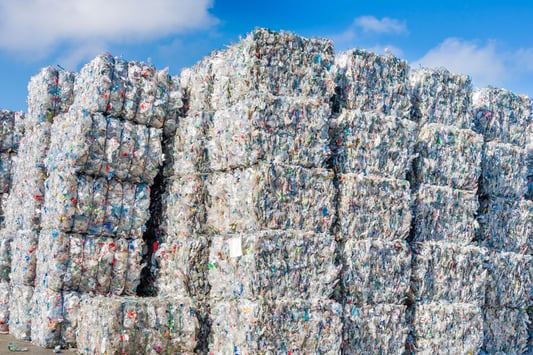In 2022, the world reevaluated its relationship with waste.
Waste on the world stage
.jpeg?width=933&height=525&name=254f45b34659bf1737e66373b21fc4ae%20(1).jpeg)
From COP27’s headline-grabbing plastic pyramid to sweeping European Commission proposals and the UK’s ongoing EPR debate, 2022 marked a major cultural shift. The Environmental Investigation Agency’s landmark report acknowledged that there’s more at stake than landfills. The ‘waste crisis’ is also the biodiversity crisis, and the fossil fuel crisis.
As the climate emergency became more urgent and the practicalities of a truly circular economy became clearer, the world finally agreed: we need to stop wasting waste.
Secondary resources have never been more valuable. The reassessment of waste’s value has come from the ground up:
❎ Public pressure on brands and policy-makers has increased, and greenwashing is no longer tolerated.
🏛 Government sustainability targets are fast-approaching, and major policy implementation is on the near horizon.
♻️ Faced with plastics taxes and the spread of EPR, brands and producers are expanding their research and investment into recyclable product design.
To meet increased demand, the waste management industry needed to get even better at sorting and recovering material.
Meeting new demand with data

In 2022, we scaled up our efforts for even closer look at what ends up in recovery facilities. In the process, we helped return more valuable material to the circular economy than ever:
📈 We doubled the number of active monitoring units across 10 countries…
👀 …and they analysed over 400,000 tonnes of material.
🔎 Our system recognised 25 billion waste objects…
📊 …across a recognition library that we expanded to 67 waste categories.
The result? Every week, each Greyparrot unit identifies an average of 86 tonnes of recoverable material being sent to landfill.
Our partners at organisations like SUEZ and Viridor now take more data-driven decisions than ever, increasing their sorting efficiency and maximising the value of their waste streams.
Milestones — and momentum

Both waste professionals and the broader private sector have recognised the pivotal role of waste data in the circular economy.
It’s a message that we received loud and clear at events like RWM, the CIWM Festival of Circular Economy, Sustainability in Packaging — and even WebSummit.
That recognition resulted in a few major milestones for the company:
🤝 We raised $11 million in Series A funding from purpose-driven investors.
🏆 Greyparrot won a National Recycling Award in the ‘Digital Systems’ category.
🚀 Our team doubled in size, arming us with the talent we need to meet our customer demand.
Needless to say, we’re incredibly proud of what we’ve achieved so far. For many of us, a rewarding cause is one of the best things about working at Greyparrot. When asked what we were grateful for this year, “working in a business I believe in” and “day-to-day work that’s aligned with my values” were a few of the most common answers.
Now that attitudes towards waste outside of the industry have shifted, there’s even more work to be done.
Preparing for 2023

The message from regulators, consumers and producers is clear: we're ready for a new relationship with waste.
We have a better understanding than ever about waste's impact on the wider climate crisis, and stakeholders across the value chain want to act on it.
We can't improve what we can't measure, though. In 2023, Greyparrot data is going to continue driving the transition to the circular economy – and make the most of the momentum built in 2022.
– Mikela Druckman, CEO and co-founder of Greyparrot
Thanks to policy announcements, private sector investments and a new appreciation for secondary resources, we’re entering 2023 with unprecedented momentum. The circular economy is no longer an idea — the time has come for implementation, and we’ll need data to measure, improve and make that happen.
This year, we’ll get even closer to achieving our vision of turning every piece of waste into a resource.




